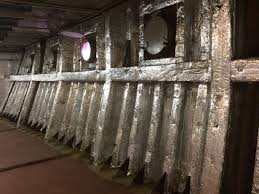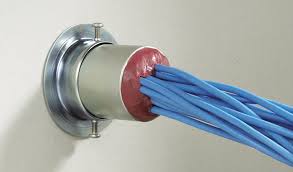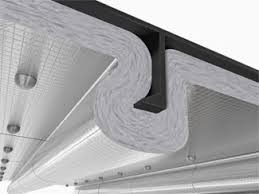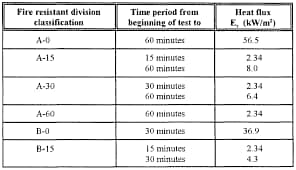Today we have our sea day and our final day on board before the ship is back in Tampa after its 14 day circumnavigation of the Caribbean Sea. Most of our guests will disembark but we have over 300 guests on board who will stay for the next 7 day cruise. And then there are some who are even staying beyond that cruise. The weather is very nice, sunshine for most of the time with the ship bumping into a shower on occasion but they are few and far inbetween. Thus we could keep to the schedule and just after 04.00 we swung around the West point of Cuba at Cabo San Antonio and then headed into the Straits of Florida. From there it is was and is a straight course all the way up to the pilot station at Tampa. Currently we are aiming for 02.30 am. and then we should be docked around 06.00. Tampa will give us a chilly day with temperatures only reaching a “cold” 63oF. /17oC and scattered showers are forecast. The crew will not complain as a cool day is better for work but guests travelling in flip flops might not be so happy.
Talking about work after my Holland America History Lecture a few days ago, guests asked me what I doing on board as I am not standing on the bridge. They obviously do not read my blog…………… But the current project, when not creating mayhem with drills or training, involves a ship wide structural inspection as explained before. But now a bit more of an in-depth and technical explanation. It basically has to with what you have in the ceiling of your cabin and the rest of the ship as well.
Ships safety really started with Solas in 1914 two years after the sinking of the Titanic. It seems that Maritime Legislation always gets a boost after some sort of shipping disaster either small or large. One of the results of all the lessons learned through the years is that certain spaces need more protection than others. And that has become very detailed in the course of the last 100 years. Since some time the construction and structural protection of a ship has been divided into 14 classes. It does not mean that Class 1 is the least or Class 14 is the best. It is just a division of requirements. Especially indicating what sort of bulkhead (steel or other) a space should have, what sort of access door and what sort of insulation.

Insulation in the side of the ship. You do not see it but it helps to keep your cabin safe and insulated.
When a ship is constructed each space on board is reviewed for the function it is supposed to fulfill while in service. Thus the engine room has a different classification than a pantry or a steward station or a passenger cabin. A passenger cabin has a classification number 7:
Accommodation spaces of moderate fire risk Spaces as in category (6) above but containing furniture and furnishings of other than restricted fire risk. Public spaces containing furniture and furnishings of restricted fire risk and having a deck area of 50 m² or more. Isolated lockers and small store-rooms in accommodation spaces having areas less than 4 m² (in which flammable liquids are not stowed). Motion picture projection and film stowage rooms. Diet kitchens (containing no open flame). Cleaning gear lockers (in which flammable liquids are not stowed). Laboratories (in which flammable liquids are not stowed). Pharmacies. Small drying rooms (having a deck area of 4 m² or less). Specie rooms. Operating rooms.
This is of course the most common classification on board as we are a tin can full of cabins and a certain amount of protection is required. The Steward Station of your cabin Steward has most of the time a classification 13 as there is a lot of different & combustible material in one space, including garbage and sun bathing towels often drenched in flammable sun tan oil. This is quite easy to see as the door of your cabin is not as heavy as the door of that Steward Station. Because of all these different rules, sometimes three spaces next to each other have three different classifications.

If a new cable has been pulled and it goes through a fire proof bulkhead then the penetration closure needs to be of the same standard.
That is not easy to see from the outside and that sometimes results in repairs not done completely right, lockers switched to different uses but not in line with the acceptable classification or sometimes a complete modification has taken place. Or simply stuff is being stored in the wrong space. We are all human and most of us are not structural engineers. Because this was noticed on several ships of the 112 ship Carnival Corporation currently manages, it has instigated a policy for a complete review and from then on a once a year review.

This is what is above your cabin ceiling. Partly for sound and warmth insulation but also to help with the fire integrity of the ship.
So I am now doing the startup review for the Oosterdam and will ensure at the same time that each space has a sign that says what is allowed in there. For that I have two off watch duty quartermasters in my wake who tape the correct signs for each space onto the bulkhead. Thus far my inspection has revealed very little in non-compliance.
But there is always the challenge of the toilet rolls. They are highly combustible once they get on fire and very long burning and you should only have a minimum amount in a space 7, the rest should be stored in a space 13. The question is now: what is a minimum amount of toilet rolls and what is more than a minimum amount? The discussion is still on going on since its invention.
I am not going to post a picture of a toilet roll but have a look at this little clip on you tube. It takes a bit of doing to get it to burn if mixed with something else (accidents occur) it is a very good source for a lot of heat and flames and it burns for a long time as well.


December 8, 2016 at 6:48 pm
https://www.youtube.com/watch?v=mtZJ__8PVDU&sns=em
Would love to know your thoughts on this. Looks to me that this pleasure craft captain was alone and below going to the head. Also seems that the ferry boat captain believed in the tonnage rule. The pleasure craft immediately turns back on course indicating that it was on autopilot. Both captains clearly wrong.
We often transit busy waterways and find that ferry boat captains have no regard for rights of way. Big ships (like yours) have limited maneuverability and we understand those limitations.
December 9, 2016 at 4:58 pm
Very interesting.
Without knowing exactly what was going on, my initial reaction is — six pack navigator — When the pleasure craft came clear from the ferry you could see the ferry was going full astern to stop and the wash pushed the boat away. Unfortunatelly it takes some time for a large ship to get the speed off and we could not see in the clip when the astern maneuver started. So I have no idea who was right and who was wrong. But you do not go to the toilet when you know you are in an area where they might be (crossing) traffic.
Thank you for reading my blog
Capt. Albert
December 9, 2016 at 8:17 am
Capt Albert:
The latest information on future developments in the port of Tampa:
http://www.tampabay.com/news/business/heres-how-port-tampa-bay-plans-to-reshape-tampa-over-the-next-15-years/2305617
They are ignoring the skyway bridge issue in this plan…….Ruud
December 9, 2016 at 4:59 pm
It seems to me it might be awhile………………..
Best regards
Capt. albert
December 11, 2016 at 6:43 pm
Ah, 17°C is still flip-flop and shorts weather in this area. Even at 0°C some still think that they are brave putting on the flip-flops and short. But then, this area is different ……..
What a shame that some passengers do not know you nor your blog. Fortunately, we do have passengers who are interested in HAL!
It’s the same in the airline industry, Captain. It’s the safest time to fly after a disaster or near disaster.
I’m so proud of the ¼ Masters who have to gain so much general knowledge working around the Bridge Officers and being trained by the Trainer/Teacher Master you are. At the end of this last Alaska season I complimented one ¼ Master for having to know behaviourism of whales. (He recognized me from my back-to-back cruise on the “late” Statendam in 2012 !!!)
February 4, 2017 at 4:21 am
Sailed on the Statendam from Fort Lauderdale to San Diego when with HAL in a Neptune Suite thanks to an upgrade. Have taken 2 cruises in Australia with the old Statendam now known as P&O Eden in the same suites? The food servery areas, deck surrounds and dining room have been updated and are very modern, and are good, and are used to promote this ship however the ship is in decline everywhere you look compared to the HAL standard. The old Neptune Suite balcony furniture is dilapidated and broken. The suites and cabins have let to become something to be refurbished if the ship survives in the P&O fleet of cast off Carnival ships we have in Australia. We will not go on another Australian P&O cruise again. P&O UK ships should not be compared to P&O Australia. Have been on Aurora and Oriana for 40 plus days which are so different in what you want in a great experience.
I have done 20 plus.